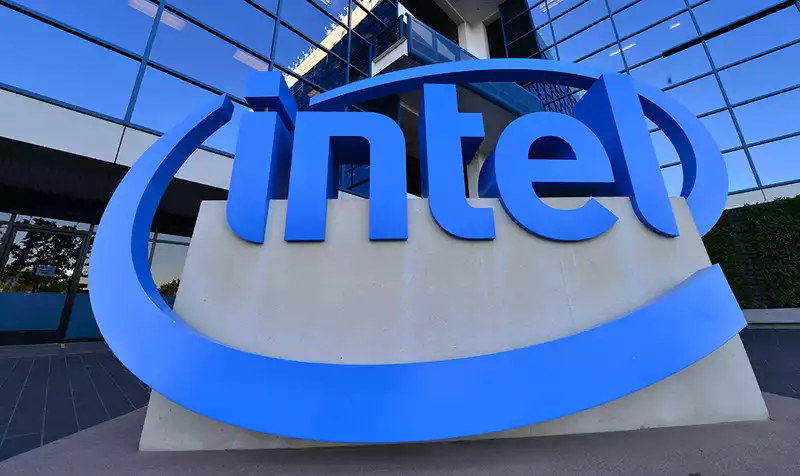When CEO Bob Swan announced Intel's second-quarter results, he lined up praise for the company's performance, which "far exceeded our expectations" (PDF), and touted its "continued focus on innovation and execution. And indeed, Intel did record sales of $19.7 billion, up 20% from the previous year. But then came the news that Intel's 7-nanometer technology was flawed. Meanwhile, Intel's first 10nm desktop CPU won't appear until late next year. Oh dear.
Indeed, Intel is still making a handsome profit. But it is handing the reigns to rival AMD, which has already achieved 7nm with its latest generation of Zen 2-based Ryzen processors, and will announce its first Zen 3 chips manufactured at the enhanced 7nm node later this year, with a move to 5nm next year.
This comes with a bit of a disclaimer. There is no universal standard for displaying nodes, and measurements only tell part of the story. Generally speaking, Intel's 10nm node is comparable to AMD's 7nm technology. In this respect, Intel is not as far behind as it appears.
What is important, though, is that AMD is pushing the boundaries of process technology and leading the way. If Intel had proceeded as planned, they would have reached 10nm on desktops five years ago, and a dual-core version of Cannon Lake would have been available. Yes, in 2015. A series of delays ultimately led to the complete abort of Cannon Lake, and the only 10nm parts now and in the foreseeable future are laptop CPUs (currently Ice Lake, soon Tiger Lake). We are still a year away from reaching 10nm on desktops.
"In late 2021, Intel plans to offer a new line of client CPUs (codenamed "Alder Lake"), including the first 10nm-based desktop CPUs, and a new 10nm-based server CPU (codenamed "Sapphire Rapids")" Intel stated.
This could cause a whole other set of problems. Early indications (leaks and rumors) are that Alder Lake uses a design similar to ARM's big.LITTLE approach, which Intel calls hybrid technology. This means combining a high-performance core with a lower-performance, more power-efficient core. It makes sense in mobile devices like smartphones and tablets, where battery life is key, and perhaps in x86 laptops. However, I am not convinced about the benefits of hybrid x86 configurations on desktops. We'll see.
Looking beyond 10nm, 7nm is not progressing as smoothly as Intel had hoped.
"The timing for 7-nanometer based CPU products is about 6 months off compared to prior expectations. The main factor is the yield of the 7-nanometer process, which according to recent data is about 12 months behind internal targets. In an earnings call with investors, Swan said, "We have identified a defect mode in the 7-nanometer process that has resulted in lower yields" (see full transcript at Seeking Alpha).
In other words, after delaying mass shipments of 10nm silicon for five years, Intel is now trying to delay shipments of 7nm by at least one year. To that end, Swan added that Intel has identified the root cause of the defects and believes there is "no fundamental failure" at this time.
"But we are also investing in contingency plans to hedge against further schedule uncertainty," Swan said.
This was accompanied by an eyebrow-raising caveat to the question of at what point Intel would consider outsourcing production to other foundries. After all, by the time Intel reaches 7 nm, TSMC (Taiwain Semiconductor Manufacturing Company) will have reached 3 nm.
"We need to use someone else's process technology and call it a contingency plan. If we do that, there are a lot of moving parts," Swan said.
Let's analyze this. Plagued by one delay after another, things are spiraling out of control, and Intel is actually considering using third-party foundries to manufacture the chips. In other words, Intel will design the silicon and TSMC or Globalfoundries or Samsung will manufacture it, just like AMD.
But even that would not be easy. Sanford C. Bernstein analyst Stacy Rasgon told Yahoo Finance that TSMC is not an option. Rasgon also believes the situation is a blow to Intel's reputation as a chip leader.
"I didn't need to read any further. What little credibility they had went out the window," Rasgon added. [Indeed, none of this is ideal. Intel's saving grace is that it was able to squeeze quite a bit out of 14nm technology on the desktop. Despite lagging behind in process nodes, Intel's 14nm Core i7 10900K is a great CPU for gaming.
For multi-threaded workloads, however, AMD's more cores and threads are a better value. AMD is also the only company to support PCI Express 4.0, paving the way for the use of ultra-fast PCIe 4.0 SSDs with read/write speeds of 5,000 MB/s.
Again, what the hell is going on, Intel?
.

Comments